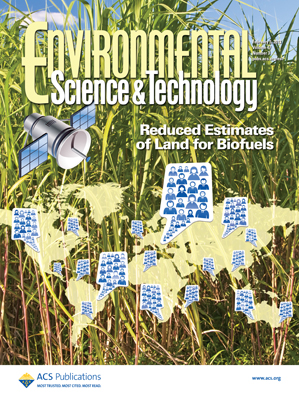Ver ítem
- xmlui.general.dspace_homeCentros e Institutos de InvestigaciónCIRN. Centro de Investigaciones de Recursos NaturalesInstituto de Clima y AguaArtículos científicosxmlui.ArtifactBrowser.ItemViewer.trail
- Inicio
- Centros e Institutos de Investigación
- CIRN. Centro de Investigaciones de Recursos Naturales
- Instituto de Clima y Agua
- Artículos científicos
- Ver ítem
Downgrading recent stimates of land available for biofuel production
Resumen
Recent estimates of additional land available for bioenergy production range from 320 to 1411 million ha. These estimates were generated from four scenarios regarding the types of land suitable for bioenergy production using coarse-resolution inputs of soil productivity, slope, climate, and land cover. In this paper, these maps of land availability were assessed using high-resolution satellite imagery. Samples from these maps were selected and
[ver mas...]
Recent estimates of additional land available for bioenergy production range from 320 to 1411 million ha. These estimates were generated from four scenarios regarding the types of land suitable for bioenergy production using coarse-resolution inputs of soil productivity, slope, climate, and land cover. In this paper, these maps of land availability were assessed using high-resolution satellite imagery. Samples from these maps were selected and crowdsourcing of Google Earth images was used to determine the type of land cover and the degree of human impact. Based on this sample, a set of rules was formulated to downward adjust the original estimates for each of the four scenarios that were previously used to generate the maps of land availability for bioenergy production. The adjusted land availability estimates range from 56 to 1035 million ha depending upon the scenario and the ruleset used when the sample is corrected for bias. Large forest areas not intended for biofuel production purposes were present in all scenarios. However, these numbers should not be considered as definitive estimates but should be used to highlight the uncertainty in attempting to quantify land availability for biofuel production when using coarse-resolution inputs with implications for further policy development.
[Cerrar]

Autor
Fritz, Steffen;
See, Linda;
van der Velde, Marijn;
Nalepa, Rachel A.;
Perger, Christoph;
Schill, Christian;
McCallum, Ian;
Schepaschenko, Dimitry;
Kraxner, Florian;
Cai, Ximing;
Zhang, Xiao;
Ortner, Simone;
Hazarika, Rubul;
Cipriani, Anna;
Di Bella, Carlos Marcelo;
Rabia, Ahmed H.;
Garcia, Alfredo Gabriel;
Vakolyuk, Mar`yana;
Singha, Kuleswar;
Beget, Maria Eugenia;
Erasmi, Stefan;
Albrecht, Franziska;
Shaw, Brian;
Obersteiner, Michael;
Fuente
Environmental science & technology 47 (3) : 1688-1694. (2013)
Fecha
2013-02
ISSN
0013-936X
1520-5851 (Online version)
1520-5851 (Online version)
Formato
pdf
Tipo de documento
artículo
Palabras Claves
Derechos de acceso
Abierto
 Excepto donde se diga explicitamente, este item se publica bajo la siguiente descripción: Creative Commons Attribution-NonCommercial-ShareAlike 2.5 Unported (CC BY-NC-SA 2.5)
Excepto donde se diga explicitamente, este item se publica bajo la siguiente descripción: Creative Commons Attribution-NonCommercial-ShareAlike 2.5 Unported (CC BY-NC-SA 2.5)


